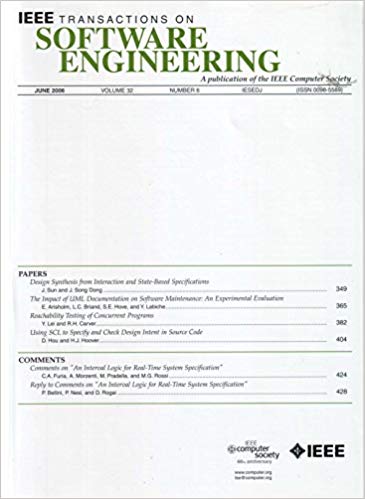A Systematic Study on Real-World Android App Bundles
IF 5.6
1区 计算机科学
Q1 COMPUTER SCIENCE, SOFTWARE ENGINEERING
引用次数: 0
Abstract
Android app developers currently mainly attempt to merge all functions into one app to fit different types of devices. However, this “one-size-fits-all” strategy can introduce various problems to both developers and end-users, such as slower download speed, and a larger attack surface. To resolve this issue, Google promotes the App Bundle framework and requires all new apps must adopt this framework after August 2021. The app bundle framework allows developers to organize their apps in modules. As a new framework, building an app bundle can be time-consuming and error-prone for developers. To fill this gap, in this paper, we discuss how developers build app bundles in practice. By investing in over 200,000 apps from Google Play, we find that 30% of apps have already adopted app bundles. The adoption ratio of large-size apps is even higher than 90%. We also find hands-on programming practices for building feature modules and dynamic assets in app bundles. This study also finds 12 common design practices, which assist developers in building app bundles.Android应用捆绑系统研究
Android应用开发者目前主要尝试将所有功能合并到一个应用中,以适应不同类型的设备。然而,这种“一刀切”的策略可能会给开发人员和最终用户带来各种问题,比如下载速度变慢,攻击面更大。为了解决这个问题,谷歌推广了App Bundle框架,并要求所有新应用在2021年8月之后必须采用该框架。应用包框架允许开发者在模块中组织他们的应用。作为一个新框架,构建应用捆绑包对于开发者来说是非常耗时且容易出错的。为了填补这一空白,我们将在本文中讨论开发者如何在实践中构建应用包。通过投资b谷歌Play的20多万款应用,我们发现30%的应用已经采用了应用捆绑服务。大尺寸应用的采用率甚至高于90%。我们还找到了在应用包中构建功能模块和动态资产的动手编程实践。这项研究还发现了12种常见的设计实践,可以帮助开发者构建应用包。
本文章由计算机程序翻译,如有差异,请以英文原文为准。
求助全文
约1分钟内获得全文
求助全文
来源期刊

IEEE Transactions on Software Engineering
工程技术-工程:电子与电气
CiteScore
9.70
自引率
10.80%
发文量
724
审稿时长
6 months
期刊介绍:
IEEE Transactions on Software Engineering seeks contributions comprising well-defined theoretical results and empirical studies with potential impacts on software construction, analysis, or management. The scope of this Transactions extends from fundamental mechanisms to the development of principles and their application in specific environments. Specific topic areas include:
a) Development and maintenance methods and models: Techniques and principles for specifying, designing, and implementing software systems, encompassing notations and process models.
b) Assessment methods: Software tests, validation, reliability models, test and diagnosis procedures, software redundancy, design for error control, and measurements and evaluation of process and product aspects.
c) Software project management: Productivity factors, cost models, schedule and organizational issues, and standards.
d) Tools and environments: Specific tools, integrated tool environments, associated architectures, databases, and parallel and distributed processing issues.
e) System issues: Hardware-software trade-offs.
f) State-of-the-art surveys: Syntheses and comprehensive reviews of the historical development within specific areas of interest.
 求助内容:
求助内容: 应助结果提醒方式:
应助结果提醒方式:


